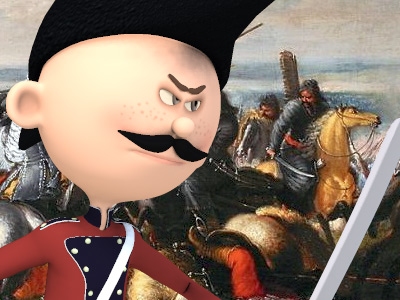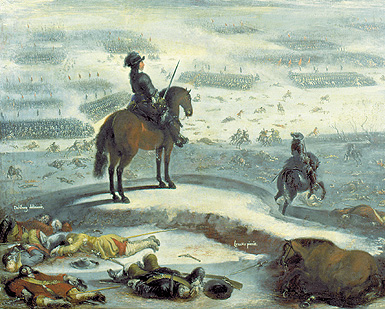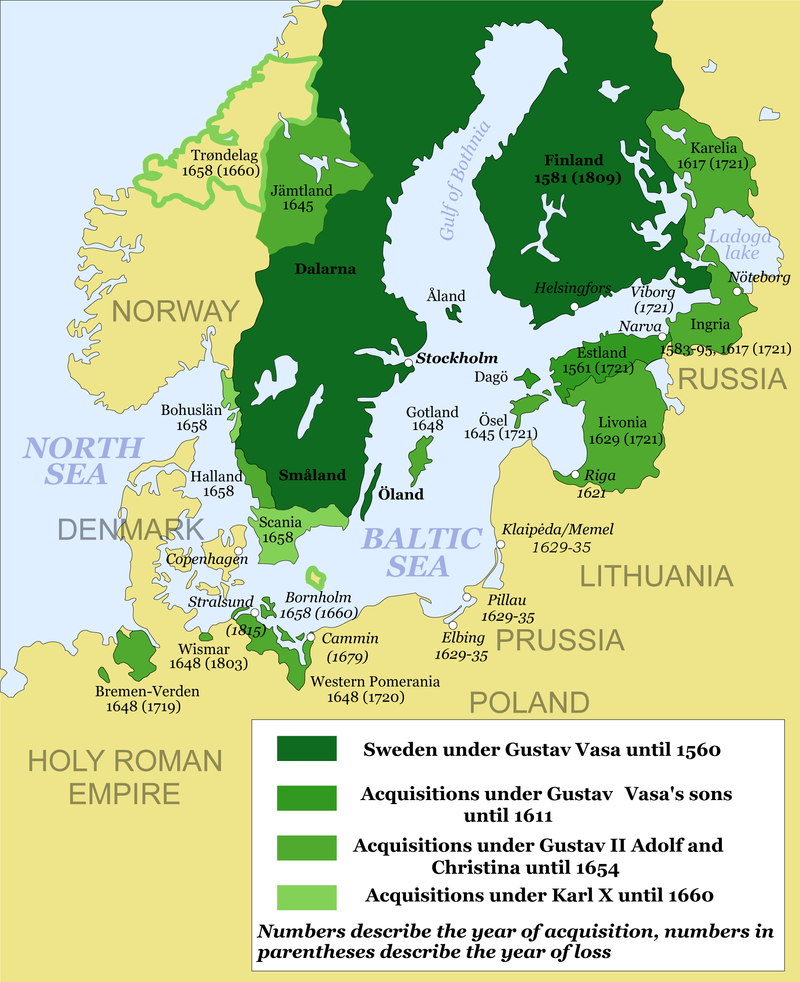Second Northern War (1655–1660)
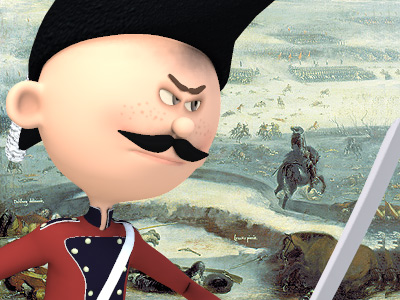
Denmark and Pomerania
The attack of Frederick III of Denmark in June 1657, aimed at regaining the territories lost in 1645, provided an opportunity for Charles X Gustav to abandon the unfortunate Polish–Lithuanian battlefields. With 9,950 horse and 2,800 foot, he marched through Pomerania and Mecklenburg. In Holstein, the Swedish force was split with Carl Gustaf Wrangel heading west to clear Bremen-Verden and Charles X Gustav heading north to clear Jutland. When these aims were achieved, Charles X Gustav in September moved to the Swedish port of Wismar and ordered his navy into the inconclusive Battle of Møn.
Meanwhile, Polish forces led by general Stefan Czarniecki ravaged southern Swedish Pomerania, and destroyed and plundered Pasewalk, Gartz (Oder) and Penkun. The Habsburg and Brandenburg allies however were reluctant to join Czarniecki, and against John II Casimir's wish decided against taking the war to the Holy Roman Empire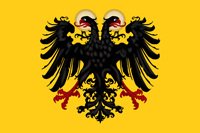 The Holy Roman Empire was a political entity in Western, Central, and Southern Europe that developed during the Early Middle Ages and continued until its dissolution in 1806 during the Napoleonic Wars. From the accession of Otto I in 962 until the twelfth century, the Empire was the most powerful monarchy in Europe. The empire reached the apex of territorial expansion and power in the mid-thirteenth century, but overextending led to partial collapse. fearing the start of a new Thirty Years' War.
The Holy Roman Empire was a political entity in Western, Central, and Southern Europe that developed during the Early Middle Ages and continued until its dissolution in 1806 during the Napoleonic Wars. From the accession of Otto I in 962 until the twelfth century, the Empire was the most powerful monarchy in Europe. The empire reached the apex of territorial expansion and power in the mid-thirteenth century, but overextending led to partial collapse. fearing the start of a new Thirty Years' War.
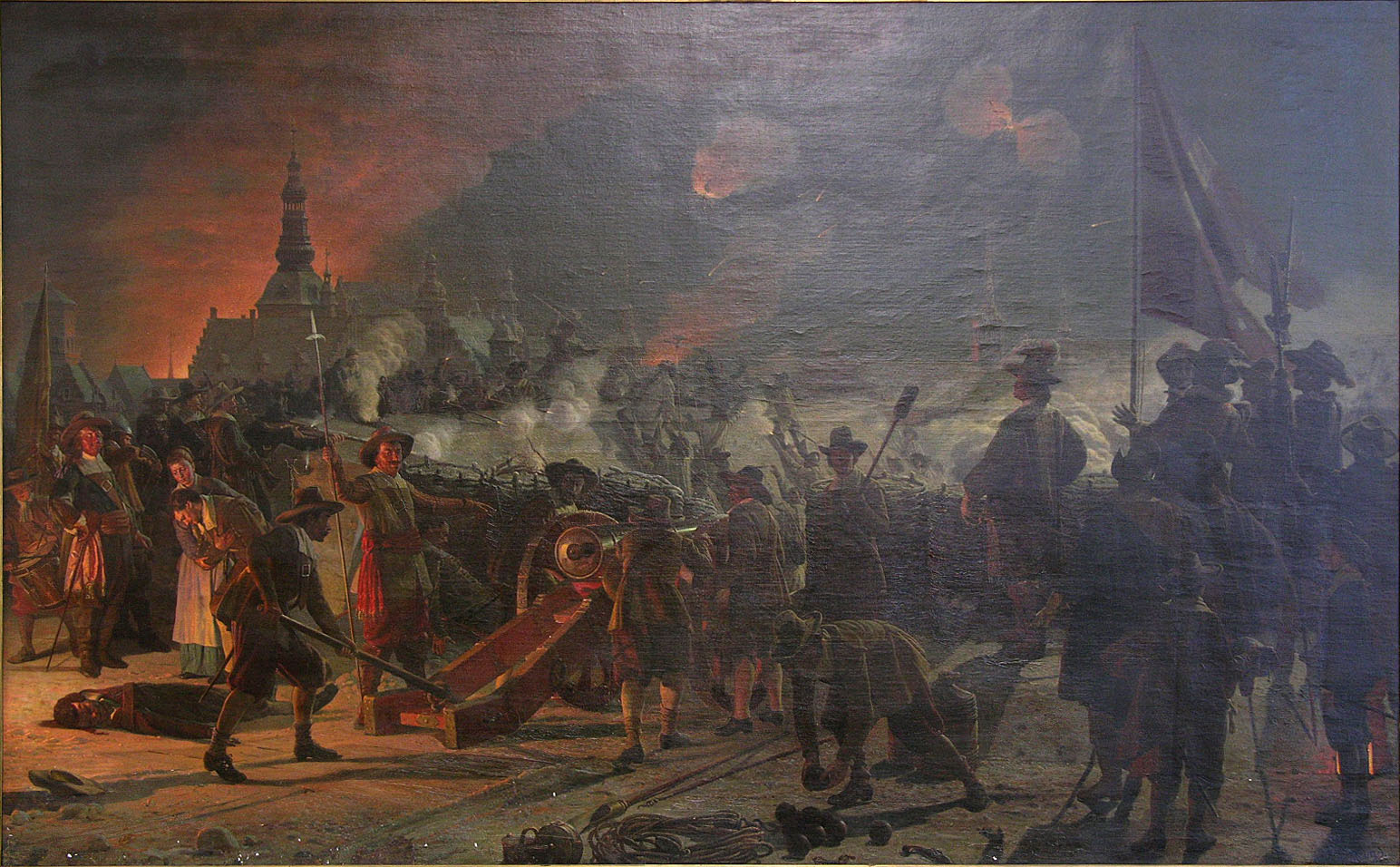
Assault on Copenhagen (1659) during the 1658/59 siege

Assault on Copenhagen (1659) during the 1658/59 siege
( Click image to enlarge)
The harsh winter of 1657/58 had forced the Dano-Norwegian fleet in port, and the Great and Little Belts separating the Danish isles from the mainland were frozen. After entering Jutland from the south, a Swedish army of 7,000 veterans undertook the March across the Belts; on 9 February 1658, the Little Belt was crossed and the island Funen (Fyn) captured within a few days, and soon thereafter Langeland, Lolland and Falster. On 25 February, the Swedish army continued across the Great Belt to Zealand with the Danish capital Copenhagen. Although only 5,000 men made it across the belts, the Swedish attack was completely unexpected; Frederick III was compelled to surrender and signed the disadvantageous Treaty of Roskilde on 26 February 1658.
Sweden had won its most prestigious victory, and Denmark had suffered its most costly defeat. Denmark was forced to yield the provinces of Scania, Halland, Blekinge and the island of Bornholm. Halland had already been under Swedish control since the signing of the Treaty of Brömsebro in 1645, but they now became Swedish territory indefinitely. Denmark also had to surrender the Norwegian province Trøndelag to Sweden.
Advertisement

These books are available for download with iBooks on your Mac or iOS device, and with iTunes on your computer. Books can be read with iBooks on your Mac or iOS device.

These books are available for download with iBooks on your Mac or iOS device, and with iTunes on your computer. Books can be read with iBooks on your Mac or iOS device.
( Click image to enlarge)
Yet, Swedish-held territory in Poland had been reduced to some towns in Royal Prussia, most notably Elbing, Marienburg and Thorn. With Transylvania neutralized and Brandenburg defected, Charles X Gustav's position in the region was not strong enough to force his stated aim, the permanent gain of Royal Prussia. He was further pressed militarily when an Austro-Polish army laid siege to Thorn in July 1658, and diplomatically when he was urged by France The Kingdom of France is the historiographical name or umbrella term given to various political entities of France in the medieval and early modern period. It was one of the most powerful states in Europe since the High Middle Ages. It was also an early colonial power, with possessions around the world. Colonial conflicts with Great Britain led to the loss of much of its North American holdings by 1763. The Kingdom of France adopted a written constitution in 1791, but the Kingdom was abolished a year later and replaced with the First French Republic. to settle. France was unwilling to intervene militarily, and Sweden could not afford to violate the Peace of Westphalia by attacking the Habsburg and Brandenburgian possessions in the Holy Roman Empire, which would likely have driven several Germans into the anti-Swedish alliance. Thus, Charles X Gustav opted to instead attack Denmark again.
The Kingdom of France is the historiographical name or umbrella term given to various political entities of France in the medieval and early modern period. It was one of the most powerful states in Europe since the High Middle Ages. It was also an early colonial power, with possessions around the world. Colonial conflicts with Great Britain led to the loss of much of its North American holdings by 1763. The Kingdom of France adopted a written constitution in 1791, but the Kingdom was abolished a year later and replaced with the First French Republic. to settle. France was unwilling to intervene militarily, and Sweden could not afford to violate the Peace of Westphalia by attacking the Habsburg and Brandenburgian possessions in the Holy Roman Empire, which would likely have driven several Germans into the anti-Swedish alliance. Thus, Charles X Gustav opted to instead attack Denmark again.
When the Danes stalled and prolonged the fulfillment of some provisions of the Treaty of Roskilde by postponing payments and not blocking foreign fleets from access to the Baltic Sea, and with half of the 2,000 Danish soldiers that were obliged by Roskilde to enter Swedish service deserting, the Swedish king embarked from Kiel with a force of 10,000 men on 16 August. While everyone expected him to head for Royal Prussia, he disembarked on Zealand on 17 August, and headed for Copenhagen, which was defended by 10,650 Danes and 2,000 Dutch. This time however, the town did not surrender, and a long siege ensued. When Swedish forces took Kronborg in September, they controlled both sides of the Øresund, yet in November a Dutch fleet broke the Swedish naval blockade of Copenhagen in the Battle of the Sound.
Meanwhile, the anti-Swedish alliance had deployed an army to Denmark, to confront Charles X Gustav with a force of 14,500 Brandenburgers commanded by Frederick William, 10,600 Austrians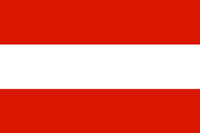 The Archduchy of Austria was a major principality of the Holy Roman Empire and the nucleus of the Habsburg monarchy. With its capital at Vienna, the archduchy was centered at the Empire's southeastern periphery. The archduchy's history as an imperial state ended with the dissolution of the Holy Roman Empire in 1806. It was replaced with the Lower and Upper Austria crown lands of the Austrian Empire. commanded by Raimondo Montecuccoli, and 4,500 Poles commanded by Czarniecki. By January 1659, the allied forces stood at Fredriksodde, Kolding and Als. Charles X Gustav then tried a decisive assault on Copenhagen on 21 and 22 February, but was repelled.
The Archduchy of Austria was a major principality of the Holy Roman Empire and the nucleus of the Habsburg monarchy. With its capital at Vienna, the archduchy was centered at the Empire's southeastern periphery. The archduchy's history as an imperial state ended with the dissolution of the Holy Roman Empire in 1806. It was replaced with the Lower and Upper Austria crown lands of the Austrian Empire. commanded by Raimondo Montecuccoli, and 4,500 Poles commanded by Czarniecki. By January 1659, the allied forces stood at Fredriksodde, Kolding and Als. Charles X Gustav then tried a decisive assault on Copenhagen on 21 and 22 February, but was repelled.
HISTORY
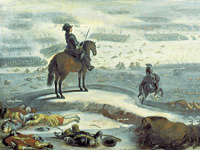
RESOURCES
This article uses material from the Wikipedia article "Second Northern War", which is released under the Creative Commons Attribution-Share-Alike License 3.0.
© Stories Preschool. All Rights Reserved.
